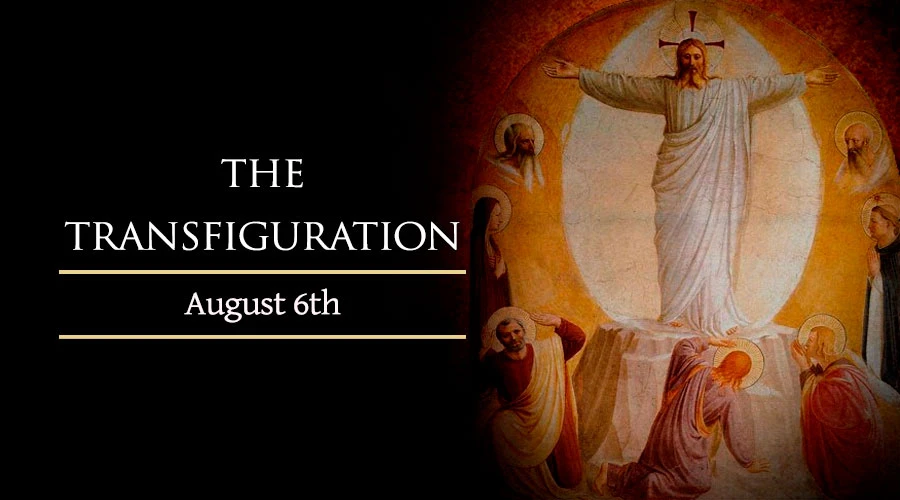The feast commemorates one of the pinnacles of Jesus' earthly life, when he revealed his divinity to three of his closest disciples by means of a miraculous and supernatural light.
Before his triumphal entry into Jerusalem, Christ climbed to a high point on Mount Tabor with his disciples Peter, James, and John. While Jesus prayed upon the mountain, his appearance was changed by a brilliant white light which shone from him and from his clothing.
During this event, the Old Testament figures of Moses and the prophet Elijah also appeared, and spoke of how Christ would suffer and die after entering Jerusalem, before his resurrection.
Matthew, Mark, and Luke all record that the voice of God was heard, confirming Jesus as his son (Matthew 17:5, Mark 9:6, Luke 9:35). Peter and John make specific reference to the event in their writings, as confirming Jesus' divinity and his status as the Messiah (2 Peter 1:17, John 1:14).
In his address before the Angelus on August 6, 2006, Pope Benedict XVI described how the events of the transfiguration display Christ as the “full manifestation of God's light.”
This light, which shines forth from Christ both at the transfiguration and after his resurrection, is ultimately triumphant over “the power of the darkness of evil.”
The Pope stressed that the feast of the Transfiguration is an important opportunity for believers to look to Christ as “the light of the world,” and to experience the kind of conversion which the Bible frequently describes as an emergence from darkness to light.
“In our time too,” Pope Benedict said, “we urgently need to emerge from the darkness of evil, to experience the joy of the children of light!”
For Eastern Catholics, the Feast of the Transfiguration is especially significant. It is among the 12 “great feasts” of Eastern Catholicism.
Eastern Christianity emphasizes that Christ's transfiguration is the prototype of spiritual illumination, which is possible for the committed disciple of Jesus. This Christian form of “enlightenment” is facilitated by the ascetic disciplines of prayer, fasting, and charitable almsgiving.
A revered hierarch of the Melkite Greek Catholic Church, the late Archbishop Joseph Raya, described this traditional Byzantine view of the transfiguration in his book of meditations on the Biblical event and its liturgical celebration, titled “Transfiguration of Our Lord and Savior Jesus Christ.”
“Transfiguration,” Archbishop Raya wrote, “is not simply an event out of the two-thousand-year old past, or a future yet to come. It is rather a reality of the present, a way of life available to those who seek and accept Christ’s nearness.”












